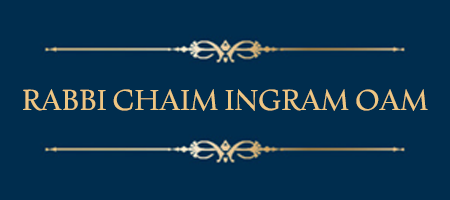ACUTE ANGLES: The Shabbat Project – Is It Still A Project
Real Questions on Jewish Thought Answered
An Occasional Series – 22
By Rabbi Chaim Ingram OAM
THE SHABBAT PROJECT – IS IT STILL A PROJECT?
Dear Rabbi. Is it just me or has The Shabbat Project got in a bit of a rut? I would be glad to hear what you think. Yours, Jayden.
Dear Jayden,
One year after Rabbi Dr. Warren Goldstein initiated The Shabbat Project in South Africa in 2013, it hit world Jewry like a tidal wave. It quickly became established as an eagerly-anticipated annual event as more and more communities came on board until it hit a peak. Your question, which others are also asking, is: has it now become somewhat jaded and stale and, if so, how has this been allowed to happen?
Perhaps the simplest way to answer is to examine the word ‘project’. When something projects, it extends. A meaningful project as well as having well-defined aims, objectives and goals needs to extend whoever or whatever it is that these aims, objectives and goals seek to address.
Quantitatively this is still happening. More and more communities are becoming involved each year. And if one Jew in every participating community or even one Jew in the world becomes fully shomer Shabbat as a result then it is surely worthwhile and every cent and bead of sweat expended on it is amply justified.
But qualitatively, I suppose we have to ask: has the project evolved? Has it extended? Or has it diminished from being revolutionary to becoming routine? Are there hundreds and perhaps thousands of potential new Shabbat-observers out there who could be captivated with a fresher approach?
I recall during my yeshiva days in Jersualem long ago the excitement of my first chasidishe ‘tisch’ at Slonim in Mea Shearim. The Slonimer Chasidim dance the night away on Shabbat evening – only they do it in the dark. It’s very atmospheric and very beautiful. One niggun (melody) in particular to which they danced for over half an hour stood out in my memory I notated the niggun as soon as that Shabbat was over and whenever I hum that melody the memory of that very ethereal Friday night returns to me.
I returned to Slonim for another Shabbat night tisch some time later – but the feeling wasn’t the same. And I had a similar experience at Toldos Aharon when I participated in a Shalosh Se’udos (third meal) which these Chasidim extend two hours into the night, also into the dark. The first time – sheer, unadulterated magic! But the second time the magic had worn off somewhat.
When I analysed it, the reason was clear to me. I had been looking for an exciting experience. Put crudely I was seeking a cheap Jewish thrill. I hadn’t been looking for commitment! At no time did I contemplate becoming a Toldos Aharon or Slonimer Chasid. The Tischen were novel and therefore exciting – but the way of life of which they were a part were not about to become a regular part of my life. I was taking. I wasn’t giving. And so when the novelty was no more, the excitement waned.
Here perhaps lies the Shabbat Project’s flaw. It is sampled once a year. But Shabbat is meant to be lived once every seven days! It demands commitment if it is to be truly appreciated, It requires us to give of ourselves.
That is not to say that there haven’t been Jews who have been persuaded through participation in the Shabbat Project to intensify their commitment to Shabbat to the extent – whether immediately or gradually – of becoming fully Shabbat observant.
Indeed I recall another experience in my dim and distant past of attending, together with my wife, a timeshare presentation. We were cold-called (as most people are) and enticed with a four-figure holiday voucher and a three-figure Coles voucher just for attending. We decided to go for the fun of it – and for the prize – although we had both resolved we were not going to be sucked into buying a timeshare apartment. Whether we acted correctly ab initio in attending under those circumstances is probably moot. Yet as the presentation unfolded and as the perks of being a timeshare-owner were impressed upon us with increasing ardour by a very talented sales team, we were very sorely tempted and very close to buying in!
So it is indeed possible that Shabbat Project participants who have not the remotest intention of committing to any more than just that one Shabbat may be so smitten by its beauty, its serenity and its joy that they ‘buy into’ Shabbat and embark upon the road to making it an integral part of their way of life despite their previous resolve to the contrary!
So yes, the Shabbat Project is here to stay. But let it continue to be a dynamic project in essence as well as in name, let it burgeon in scope and may its aims and objectives grow ever more ambitious. (Who says, for example, that it can’t happen twice, thrice or even four times a year?) And let it not be defined by superficialities like the record-breaking length of its challa loaves.
Even the most appetising challa becomes stale after a few days. This must not be allowed to happen to this stunning initiative of Rabbi Goldstein’s.
The good rabbi might be daring to dream that, as more and more Jews come on board each year, the time will soon come when every Jew in the world will keep holy just one Shabbat, And, says the Midrash, (Shemot Raba 25:12), when that auspicious day arrives, so will Mashiakh.
Nothing jaded about that idea!
Do you have a question for Acute Angles? If so, why not email me at [email protected]
